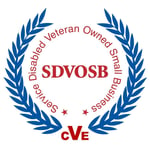Human error has the potential to affect aspects of any business, not just safety critical industries such as chemical manufacturing, oil and gas, aviation, aerospace, or nuclear generation.
Think poor quality products, reduced productivity, diminished reliability, increased overhead, injuries, safety or environmental incidents, and reputational damage—they all can trace human error as a root cause. Even a recent loss by the NFL’s Tampa Bay Buccaneers’ with future hall of fame quarterback Tom Brady who apparently forgot it was fourth down at the end of the game against the Chicago Bears shows that human error is present in every industry. Stress, worry, and uncertainty felt by many people such as we are experiencing now in the age of COVID, multiply the human error opportunities.
There is a puzzling yet attractive clash here; human error cannot be eliminated, and it is the raw material for optimizing. High reliability organizations and enlightened business leaders whose performance is at the pinnacle in their line of work appreciate that an individual worker’s behavior is informed by the organization’s processes and culture. A site’s culture includes the mindset and behaviors of the people who work in it, along with a site’s rules, policies, and procedures. Add to this mix a leader’s management style and one can begin to understand why culture, performance, and resilience/agility in one organization can differ enormously from another.
Operational excellence (OE) has been defined (Andrew Miller, 2014) as the relentless pursuit of doing things better. The journey to OE requires a mindset and company culture that questions current conditions and focuses on adding value. Twenty years ago (2000), Oliver Wight’s ‘ABCD Checklist for OE’ emphasized the criticality of integrating people, business processes, tools/physical assets, and functional organizations as foundational for any enterprise committed to successful safety and risk management. Similarly, operational discipline and readiness, and the need for clear and concise communication are core components of OE in a manufacturing environment.
In 2010-2011, several dozen chemical plants and refineries in Louisiana were surveyed about root causes of industrial releases. Mechanical was cited most often, followed by human factors, weather/act of God, and third-party interruption. At that time, operator error was mentioned as the primary human factor contributing to accidental releases. However, simply targeting the mistakes of operators or supervisors misses important underlying significant cultural, organizational and leadership factors. In other words, investigations that identify human (operator) error as root cause serve little to no useful purpose if it does not connect how training, , communication, processes and procedures, leadership, and safety climate influenced the human error in the first place. Without that deeper insight into the organization’s health, we will never truly learn from prior incidents and the investigation fails, as it leaves the organization vulnerable to some future catastrophic disaster.
To begin a culture shift and OE transformation, an organization must embed excellence into the company’s culture. The first step is to identify the problem areas by enabling investigators to perform more rigorous, in-depth, thorough, and value-added investigations/RCAs.
For information on how to incorporate human factors analysis into your investigation program, or to receive more information about Vetergy’s other services, click here or email us at info@vetergy.com.



 1200 Corporate Drive, Ste 170
1200 Corporate Drive, Ste 170




